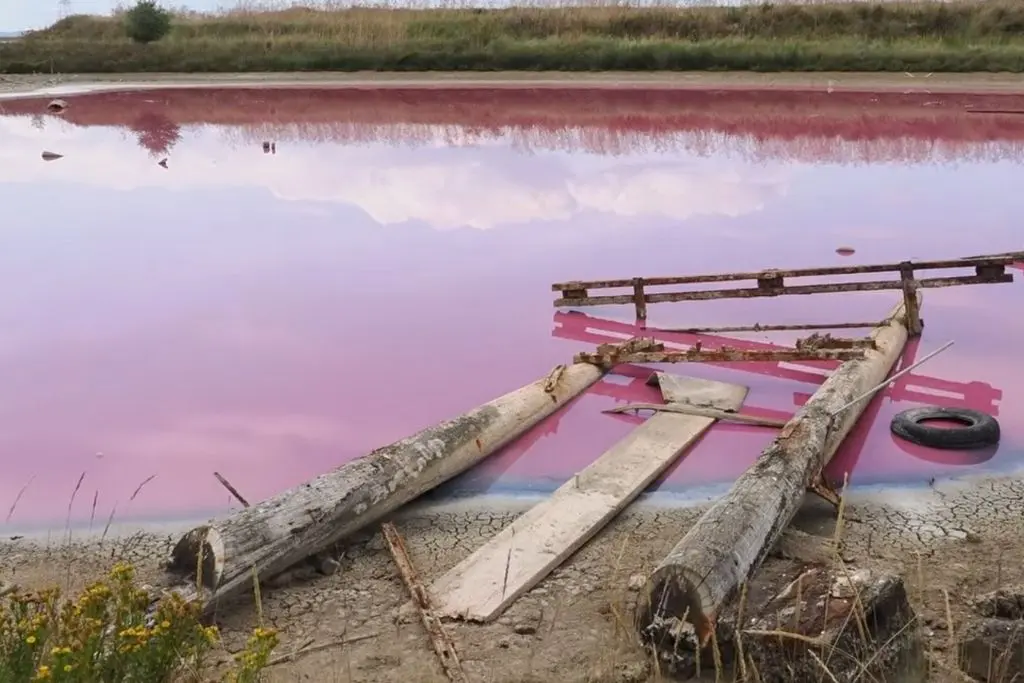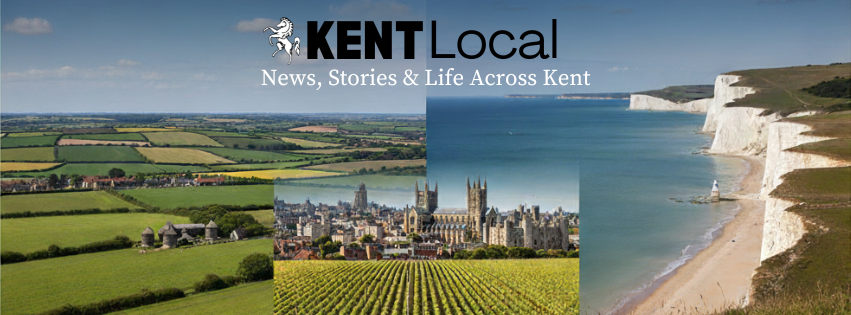A bright pink lake, a sight more common in Australia than England, has appeared in Kent. The unusual body of water, discovered by a local man, initially caused a lot of concern. People worried it was a sign of industrial pollution.

However, environmental experts have now confirmed the colour is completely natural. The experts said the effect was caused by tiny living things thriving in the water, showing that even in a very normal place, nature can create something truly amazing.
The Discovery
Barry Knight, 61, was walking along the King Charles III England coastal path on the Isle of Sheppey when he first saw the 65-metre-long lake. He was on a long walk and was surprised to see the vivid pink colour. “I thought ‘oh my goodness’ a pink lake, are my eyes deceiving me,” Mr Knight said.
He described the scene as looking “not natural” and noticed a “sulphur-like smell” and litter nearby. This made him worry that it could be contaminated. He took photos and shared them online, and his pictures quickly went viral. This made the quiet spot a local sensation and an overnight tourist attraction.
Official Response and Warning
The Environment Agency has since confirmed the water’s unusual colour is a natural phenomenon. A representative from the agency said it’s a condition that often happens in lakes during the summer, caused by certain types of algae or bacteria.
The agency has also issued a safety warning. They are advising people and their pets to avoid touching the water or the thick scum on its surface. This is because a high amount of these tiny living things can be harmful. The spokesperson explained that while the cause is natural, these types of blooms can cause skin problems or make someone sick if they touch or drink the water.
The Science Behind the Colour
So, why is it pink?
Scientists say the colour comes from tiny creatures that love salt. These are called halophilic organisms. This group includes some types of bacteria and a very small alga called Dunaliella salina. These tiny organisms thrive in places with a lot of salt.
The organisms produce a strong red-orange substance called beta-carotene. This pigment protects them from strong sunlight. It is the same substance that makes carrots orange and gives flamingos their famous pink colour. In recent warm weather, the lake’s water levels dropped, making the salt and minerals much more concentrated. This created a perfect environment for the microbes to grow and make the water this brilliant colour.
A Wider Phenomenon
While a pink lake in Kent is rare, these types of lakes are a known natural wonder around the world. Their existence shows how life can adapt and survive in very extreme places.
Well-known examples include Lake Hillier in Australia, which is famous for its bubblegum pink colour that stays bright all year. Another is Lake Retba in Senegal, where locals even harvest salt from the vibrant pink water. The discovery of a similar lake in the UK’s more moderate climate has been especially interesting for scientists. It adds Kent to a list of global spots that showcase the unexpected beauty found in nature’s more unusual forms.
Local Reactions and Concerns
The local community has had a mix of reactions. Some people are excited to see the lake, thinking it’s a beautiful addition to their area. Others remain cautious, still worried that the colour might be a sign of a hidden environmental problem. Their fears grew when an old car and some rubbish were found near the area. The discovery has started important conversations among residents about the need to protect their local environment.
What Happens Next?
Scientists believe the lake’s colour depends on the weather and the water’s makeup. For example, if it rains more, the water will become less salty and less concentrated. This could cause the pink organisms to die off, and the lake could return to its original colour. Because of this, the pink lake might be a temporary attraction. Local authorities and environmental groups are expected to continue watching the site to better understand its unique ecosystem. For now, it remains a strange and beautiful sight on the Kent coast.


